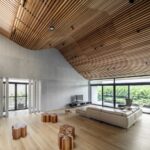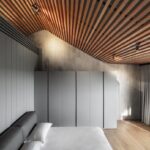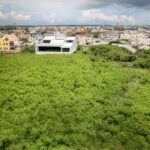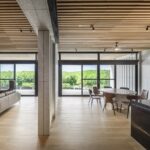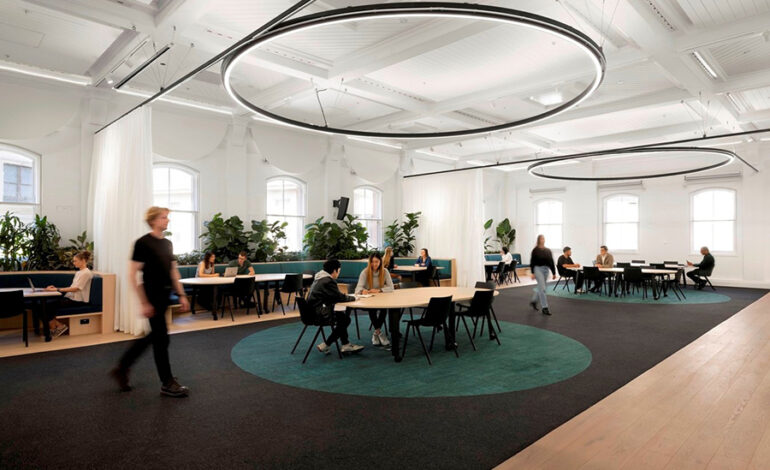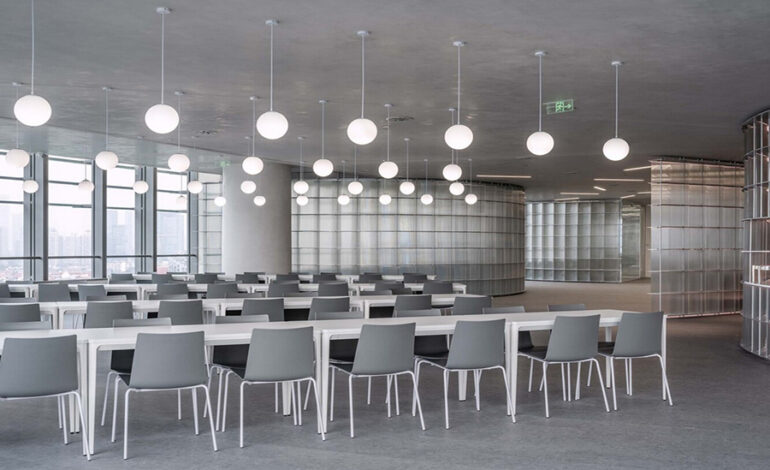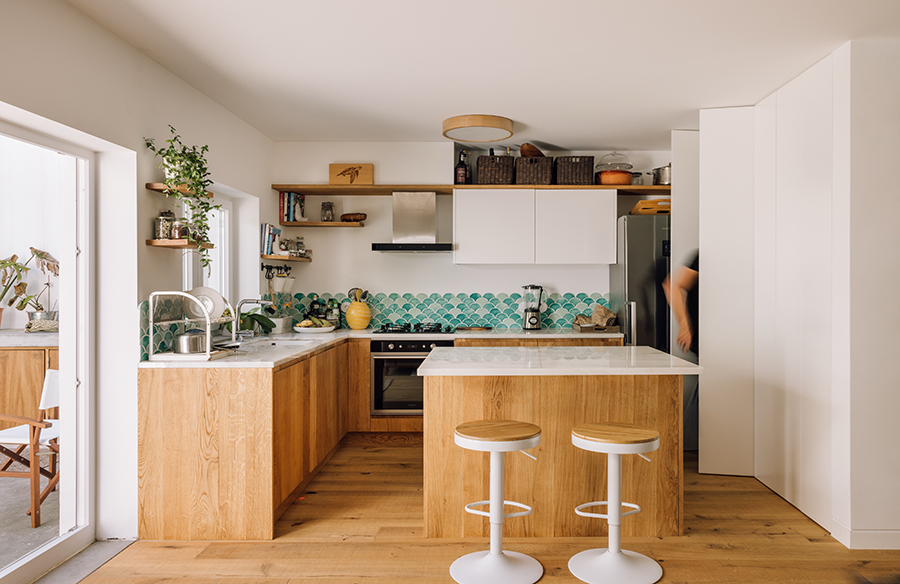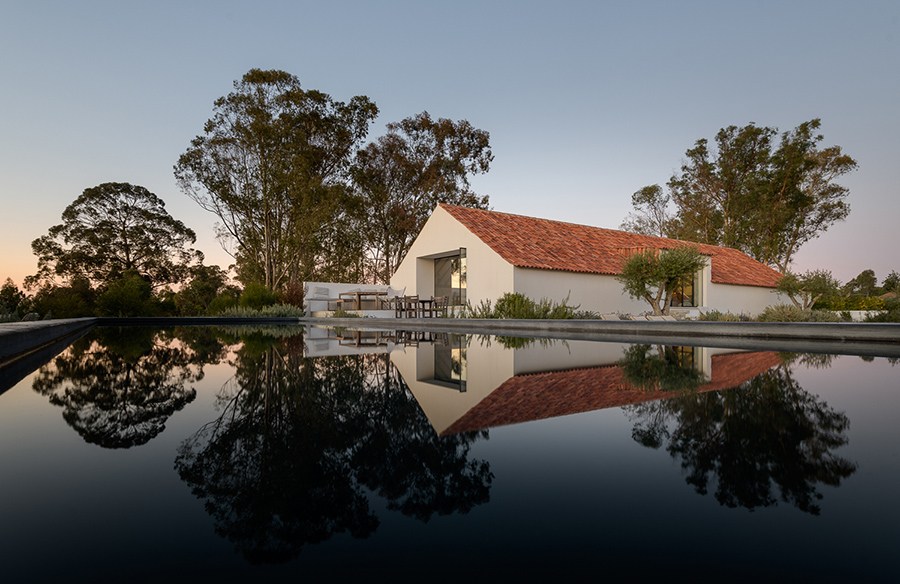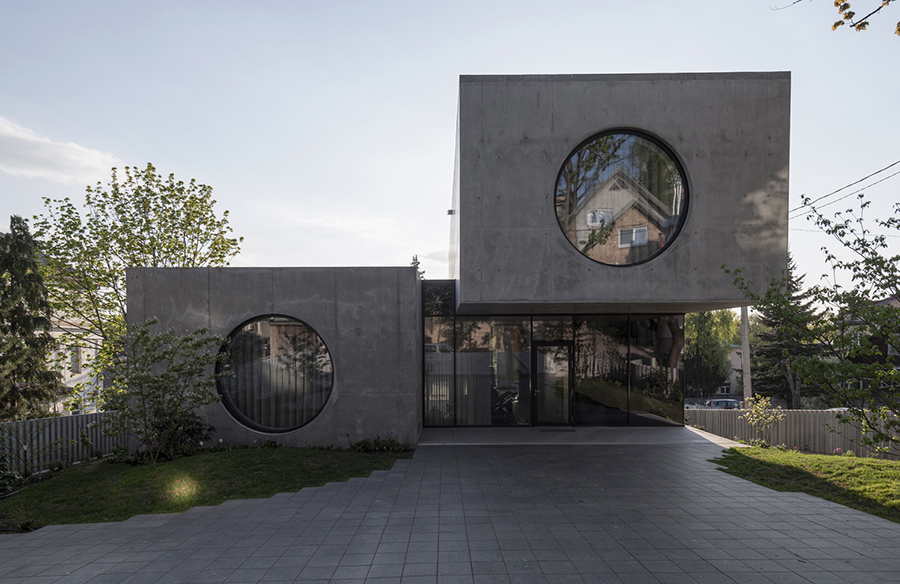Rediscovering Tradition: The Story of Penghu House

A Cultural Legacy
Situated on the Penghu archipelago off the coast of Taiwan, the indigenous coral stone houses, known as laogushi, stand as a testament to the region’s rich cultural heritage. These houses, built with coral blocks and basalt quarried from the islands, are characterized by their unique architectural features, including rolled roof ridges and slit-and-pillar window openings.
A Modern Interpretation
Inspired by the historical coral house clusters found across the windswept plains of Penghu, XRANGE Architects embarked on the journey to reinterpret this architectural legacy for a multi-generational Penghu family. The result is the Penghu House, a modern iteration that pays homage to tradition while embracing contemporary design principles.
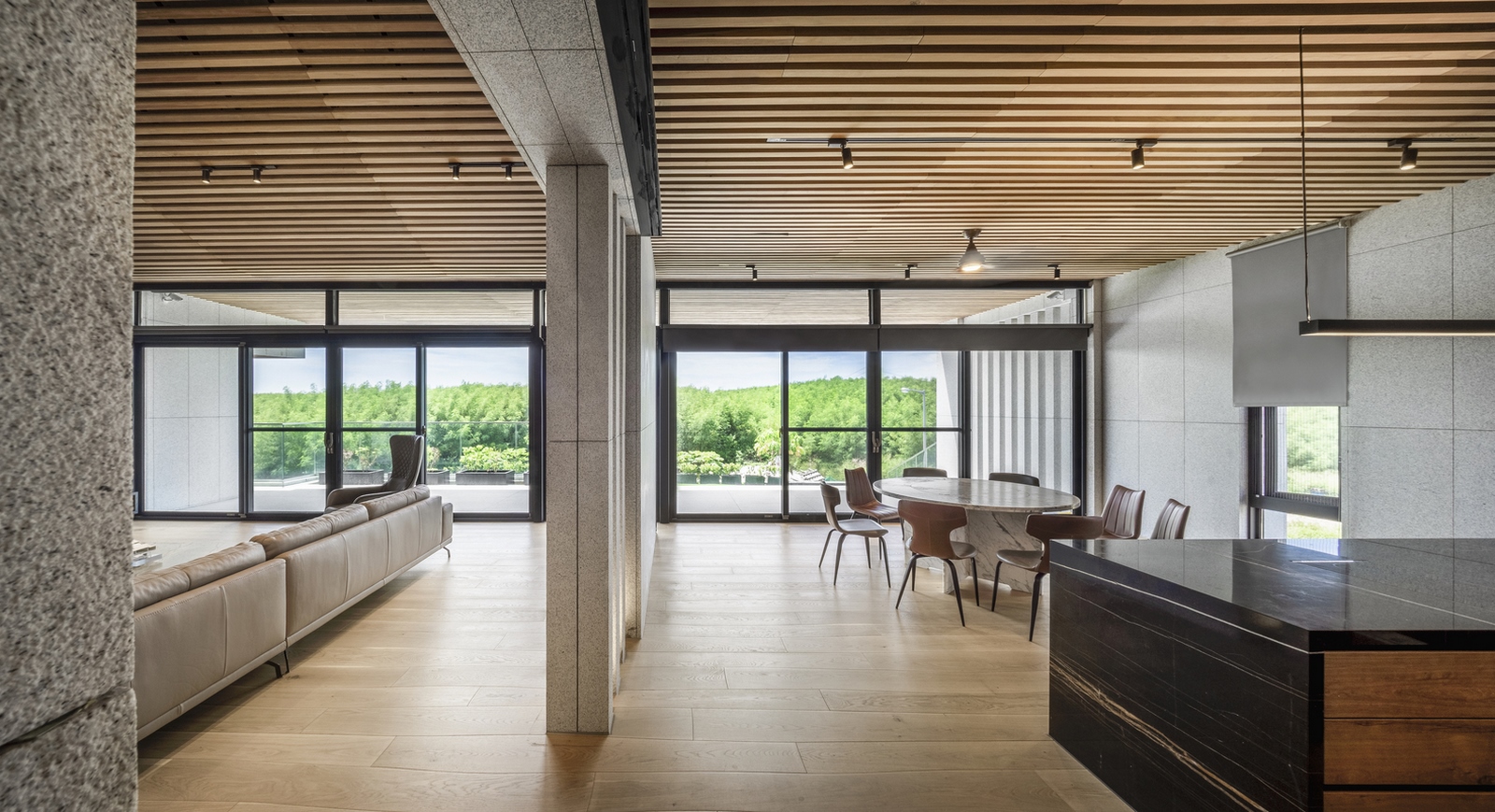
Design Concept
From a distance, the silhouette of Penghu House resembles an indigenous village cluster, with overlapping layers of rolled roof ridges. Three concrete volumes, each with its own distinctive roof ridge, are stacked to create this effect. Clad in white stone, the striking roof lines stand out against the island landscape, offering a striking contrast against the azure sky and green farmland.
Spatial Arrangement
The central block of Penghu House features a spacious living area that opens onto a garden, while the eastern block houses a courtyard connecting the parents’ bedrooms and ancestral temples. The western block accommodates the dining hall and master bedroom, offering sweeping views of the sea from the rooftop terrace.
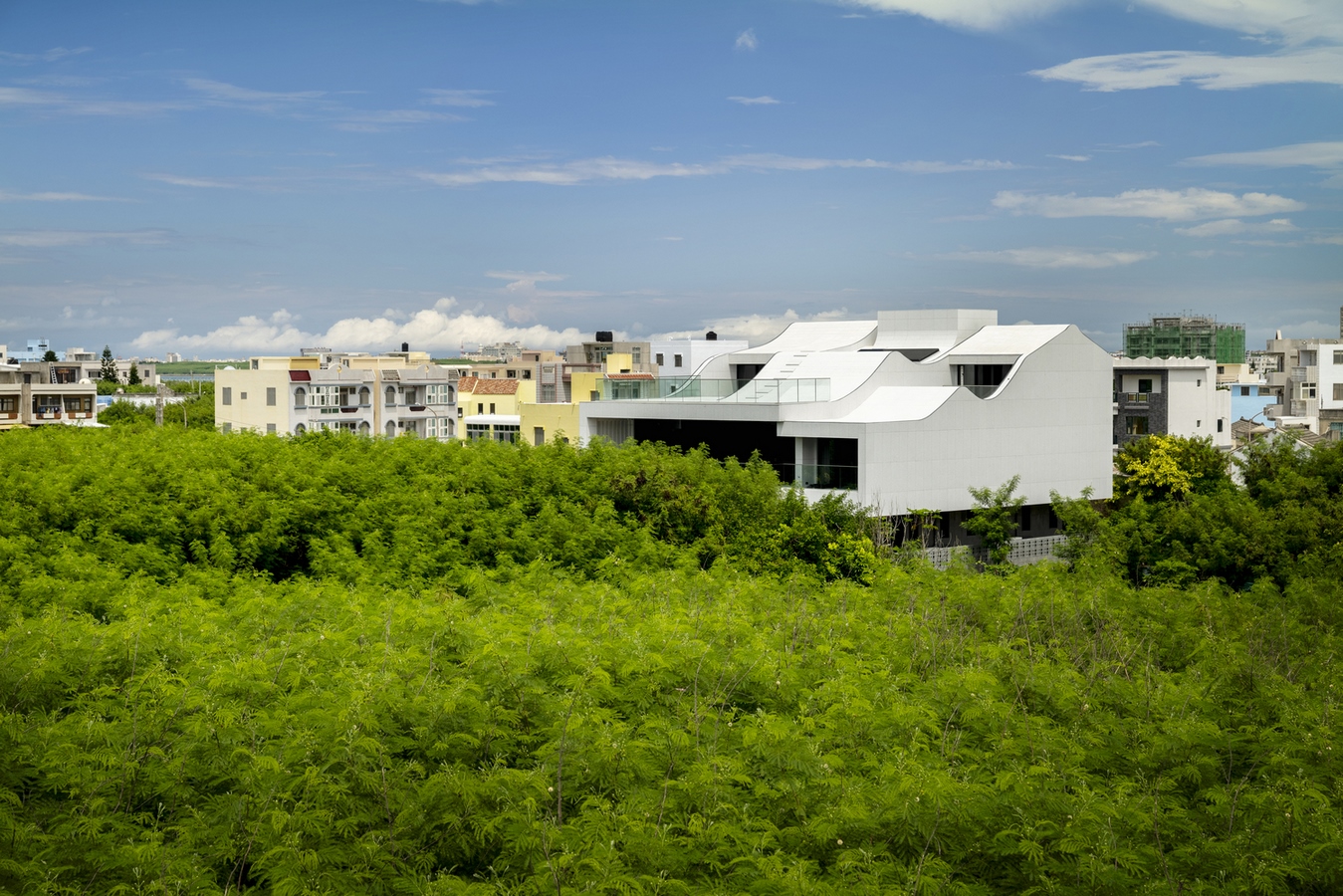
Climate Considerations
To address the region’s climate challenges, Penghu House incorporates various strategies for thermal comfort and energy efficiency. Deep overhangs and patio screens reduce solar exposure, while thick exterior walls and a rain screen granite panel system provide insulation against heat and gale-force winds. Effective natural ventilation and humidity regulation further enhance the interior comfort, eliminating the need for air conditioning.
Sustainability Initiatives
In addition to its focus on climate resilience, Penghu House integrates sustainability principles throughout its design. Recycled wood cut-offs are used for furniture and screens, while natural clay renders on bedroom walls prevent mold and fungal growth. Fragrant pine lining the rolling roofscape adds a warm visual and olfactory dimension to the interior spaces.
Conclusion
Penghu House stands as a testament to the power of architectural innovation in preserving and celebrating cultural heritage. By reimagining tradition within a modern context, XRANGE Architects have created a timeless masterpiece that honors the past while embracing the future.


